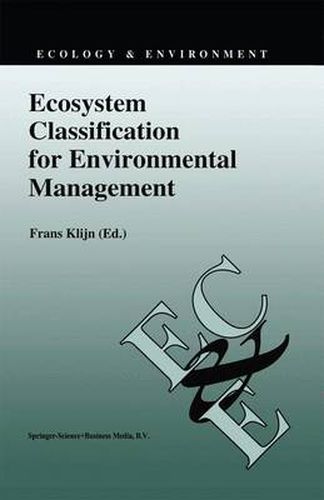Readings Newsletter
Become a Readings Member to make your shopping experience even easier.
Sign in or sign up for free!
You’re not far away from qualifying for FREE standard shipping within Australia
You’ve qualified for FREE standard shipping within Australia
The cart is loading…






This title is printed to order. This book may have been self-published. If so, we cannot guarantee the quality of the content. In the main most books will have gone through the editing process however some may not. We therefore suggest that you be aware of this before ordering this book. If in doubt check either the author or publisher’s details as we are unable to accept any returns unless they are faulty. Please contact us if you have any questions.
The ecosystem is a central concept in modern ecology and is fundamental to sound environmental policy making. Not all ecosystems are equally susceptible to human-induced environmental change, nor do we attribute equal value to all ecosystem types. From a nature conservation point of view we are concerned about the spatial extension of ecosystems and their quality, as well as about their responsiveness and recovery potential. This requires the classification and mapping of ecosystems. This book treats the why and how of such classification and mapping as a prerequisite to environmentally-sound management aimed at sustainability and the preservation of biodiversity. Existing concepts and procedures are modified for modern applications, including susceptibility assessment, environmental quality assessment and monitoring, as well as predictive modelling for environmental impact assessments. These procedures are illustrated by applying them to current environmental problems, such as acidification, eutrophication, changing land use and groundwater lowering. Written by a number of landscape ecologists from several West European countries, this book discusses a range of theories, concepts, and methods from plant ecology, vegetation science, physical geography, and other environmental sciences composed in such a way to constitute practically applicable tools. The text is designed for scientists engaged in applied research and professionals in environmental planning and graduate students.
$9.00 standard shipping within Australia
FREE standard shipping within Australia for orders over $100.00
Express & International shipping calculated at checkout
Stock availability can be subject to change without notice. We recommend calling the shop or contacting our online team to check availability of low stock items. Please see our Shopping Online page for more details.
This title is printed to order. This book may have been self-published. If so, we cannot guarantee the quality of the content. In the main most books will have gone through the editing process however some may not. We therefore suggest that you be aware of this before ordering this book. If in doubt check either the author or publisher’s details as we are unable to accept any returns unless they are faulty. Please contact us if you have any questions.
The ecosystem is a central concept in modern ecology and is fundamental to sound environmental policy making. Not all ecosystems are equally susceptible to human-induced environmental change, nor do we attribute equal value to all ecosystem types. From a nature conservation point of view we are concerned about the spatial extension of ecosystems and their quality, as well as about their responsiveness and recovery potential. This requires the classification and mapping of ecosystems. This book treats the why and how of such classification and mapping as a prerequisite to environmentally-sound management aimed at sustainability and the preservation of biodiversity. Existing concepts and procedures are modified for modern applications, including susceptibility assessment, environmental quality assessment and monitoring, as well as predictive modelling for environmental impact assessments. These procedures are illustrated by applying them to current environmental problems, such as acidification, eutrophication, changing land use and groundwater lowering. Written by a number of landscape ecologists from several West European countries, this book discusses a range of theories, concepts, and methods from plant ecology, vegetation science, physical geography, and other environmental sciences composed in such a way to constitute practically applicable tools. The text is designed for scientists engaged in applied research and professionals in environmental planning and graduate students.